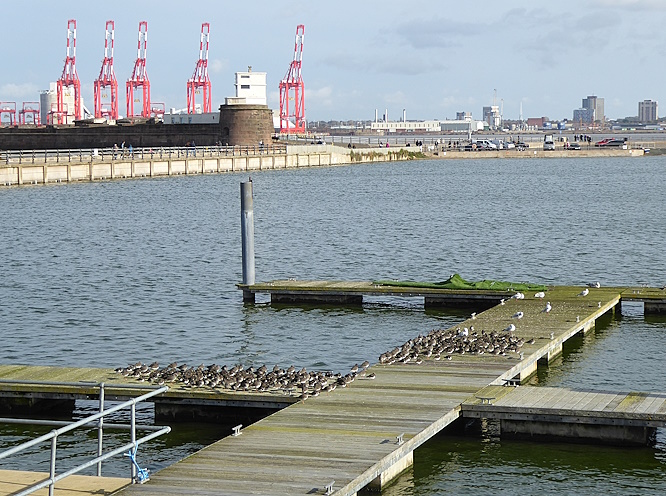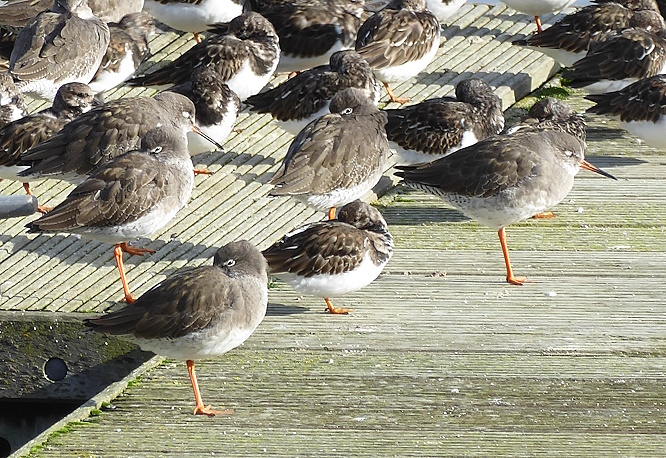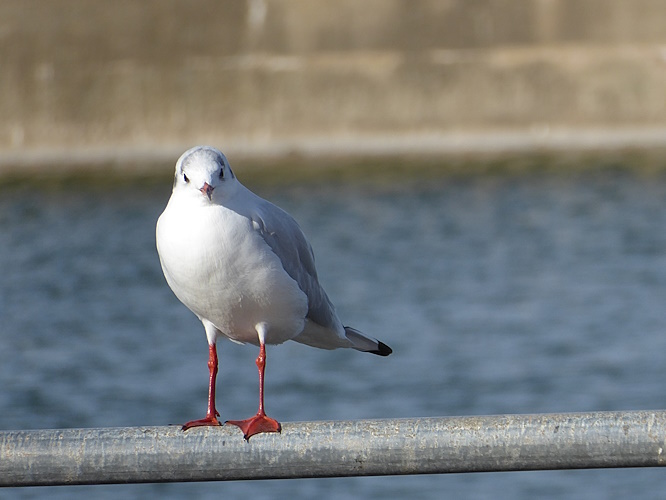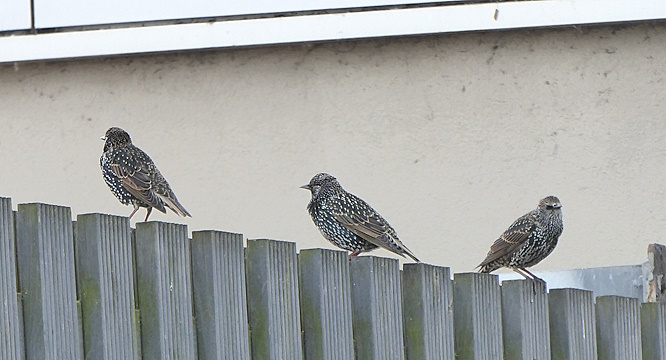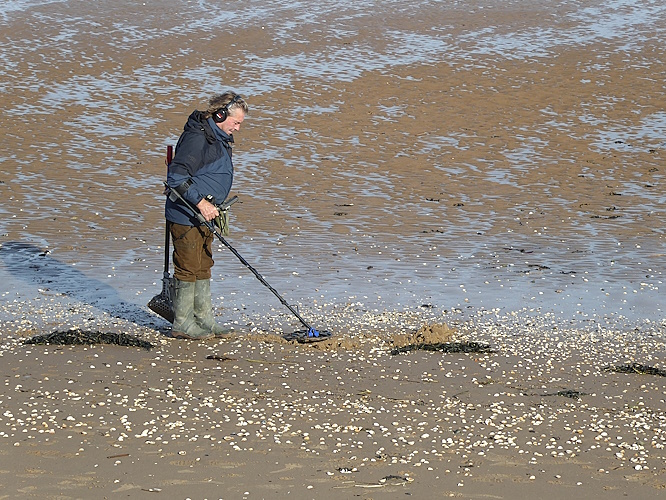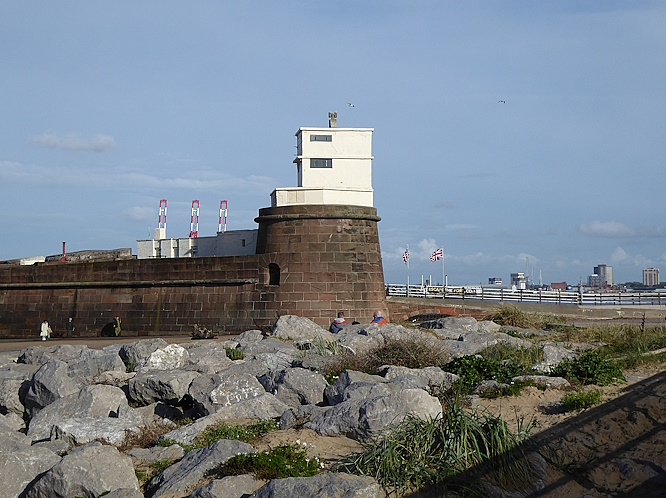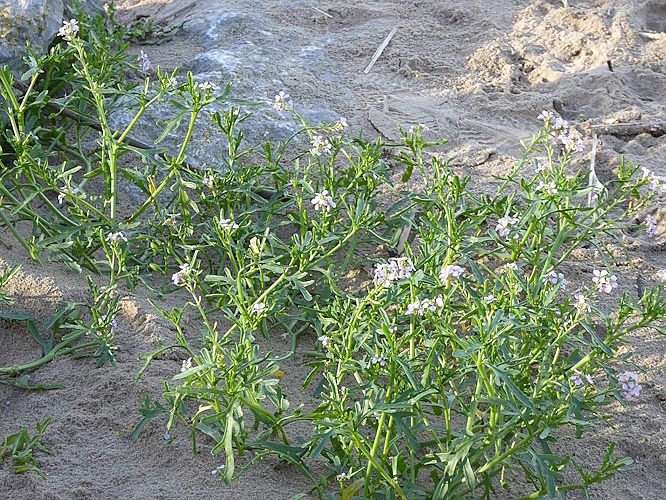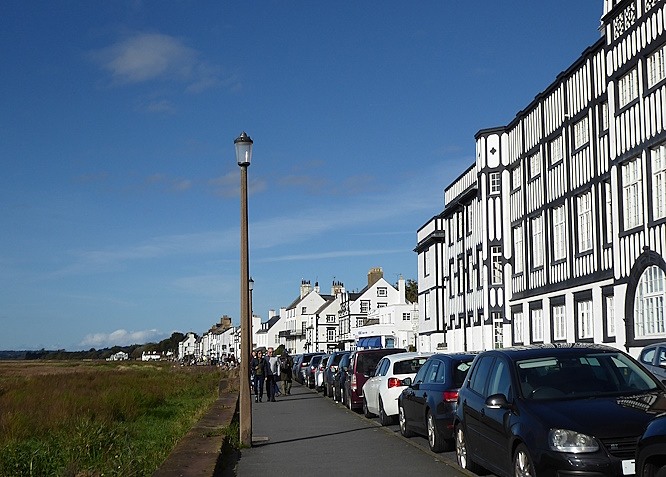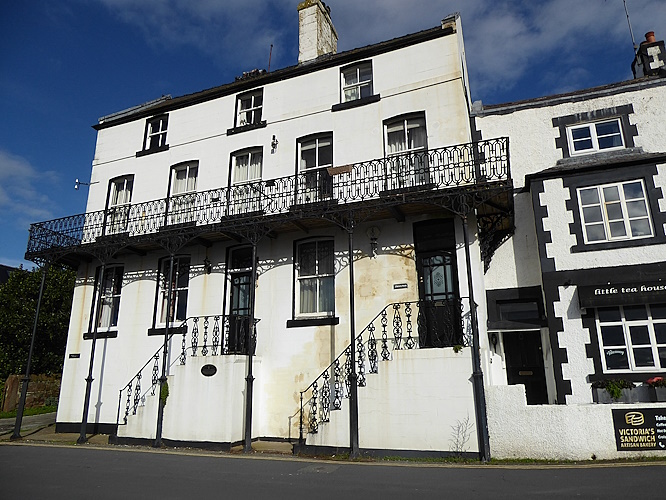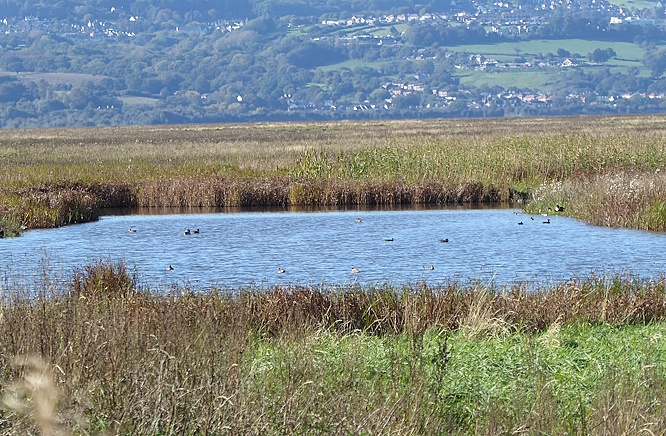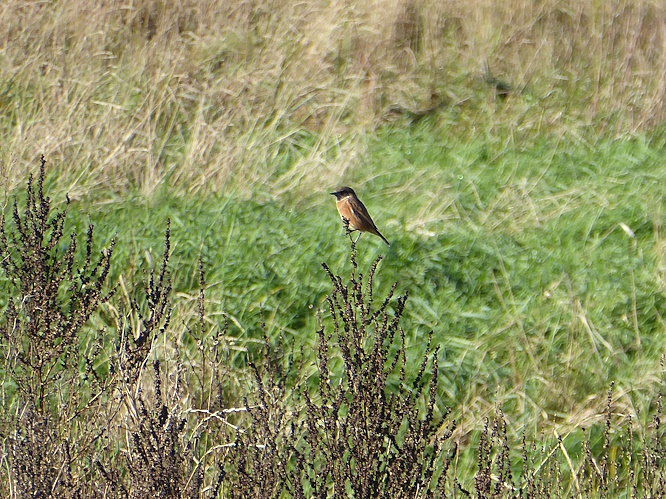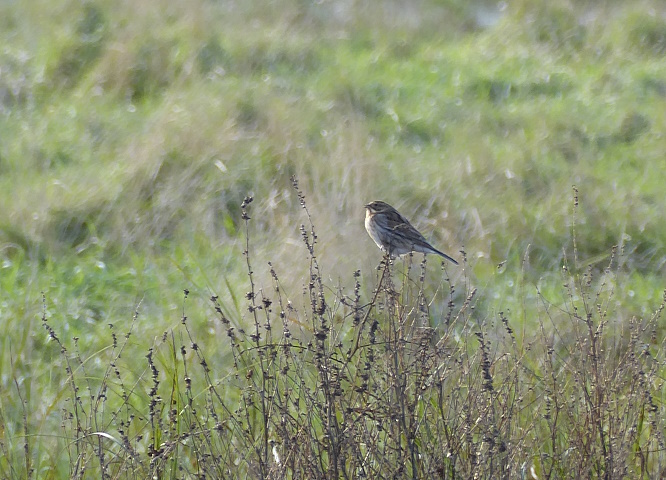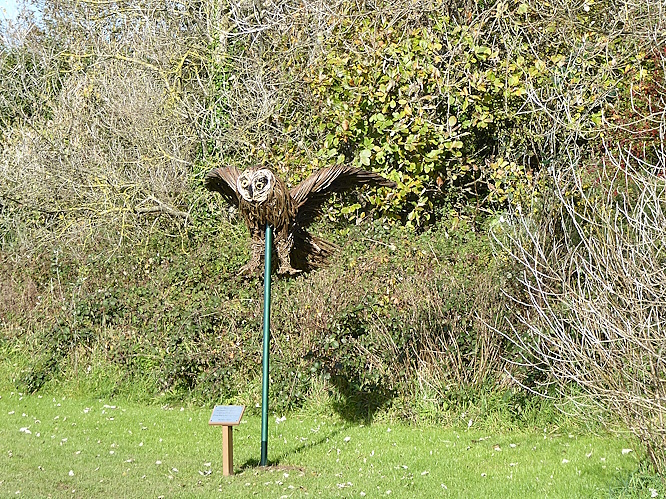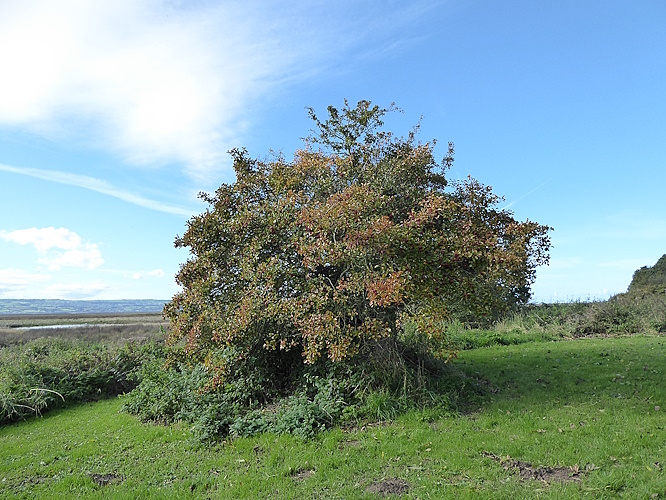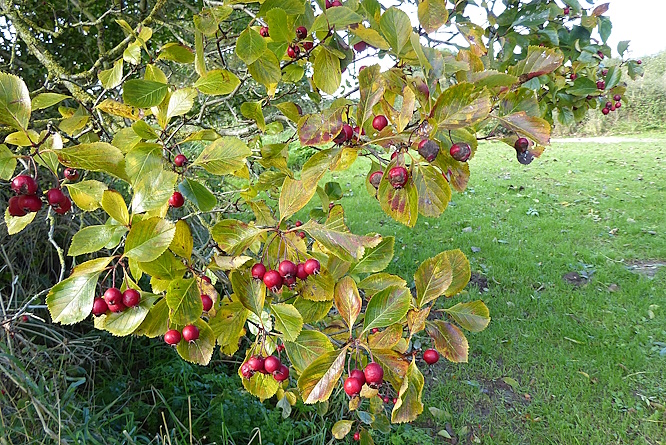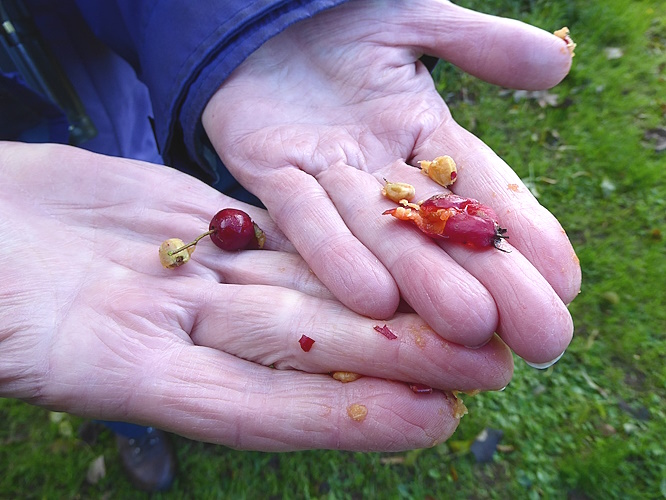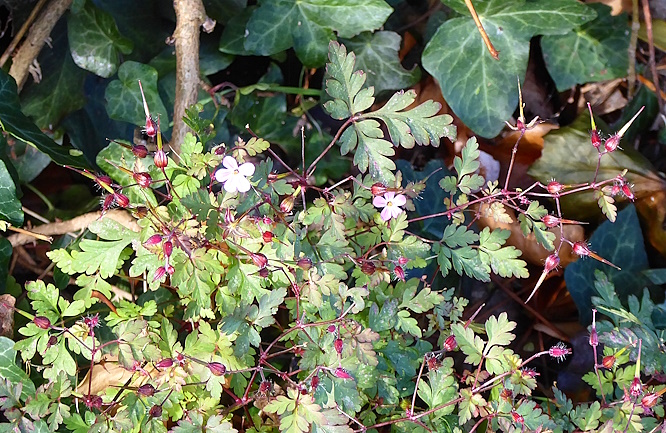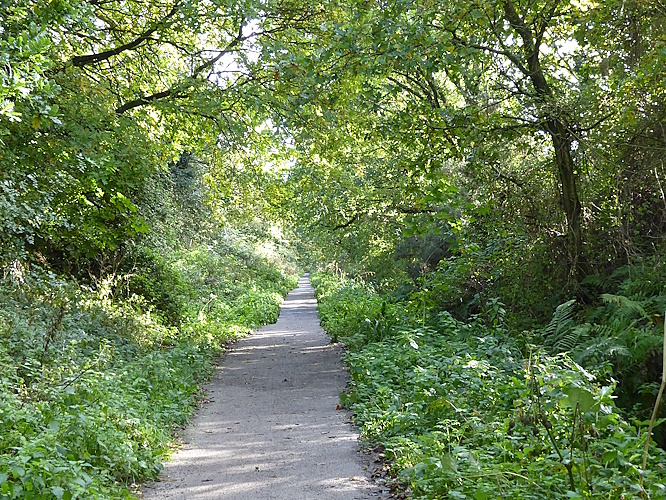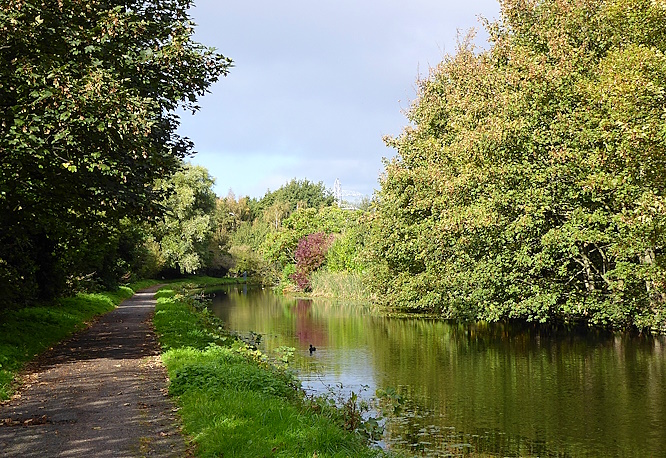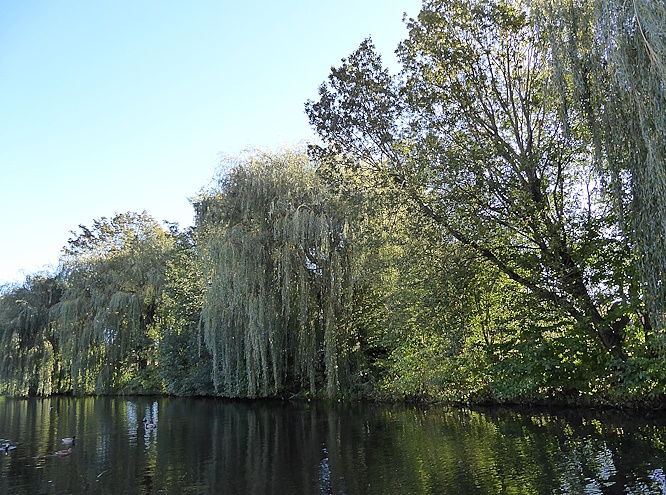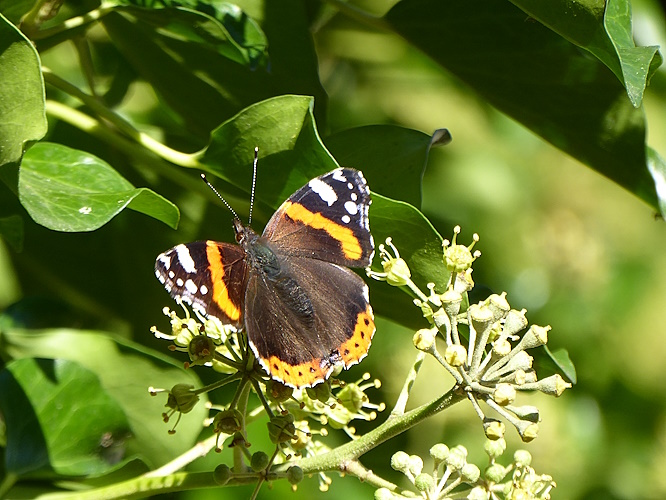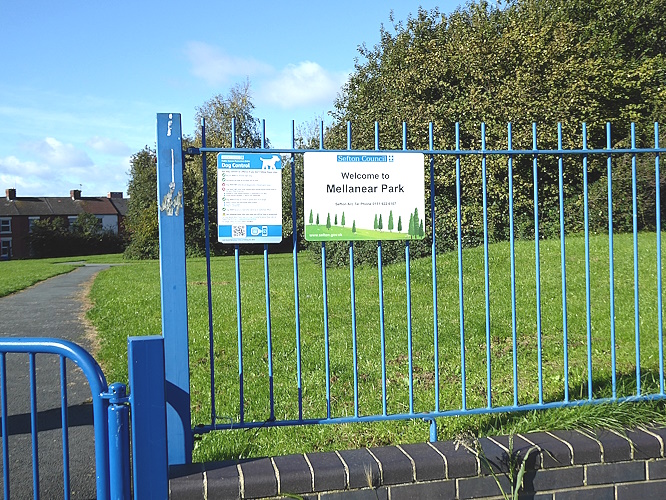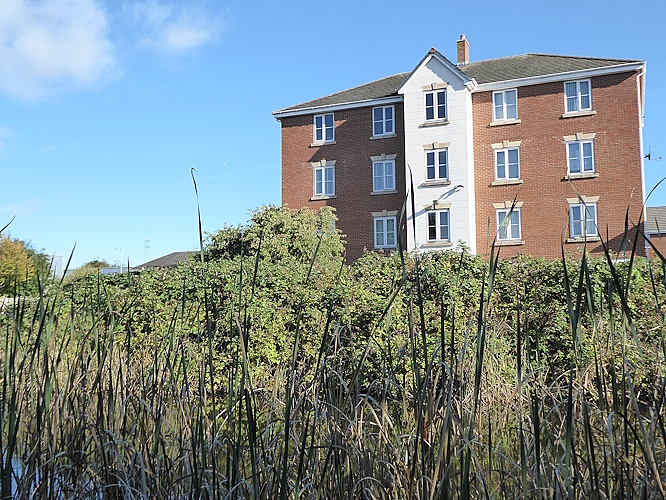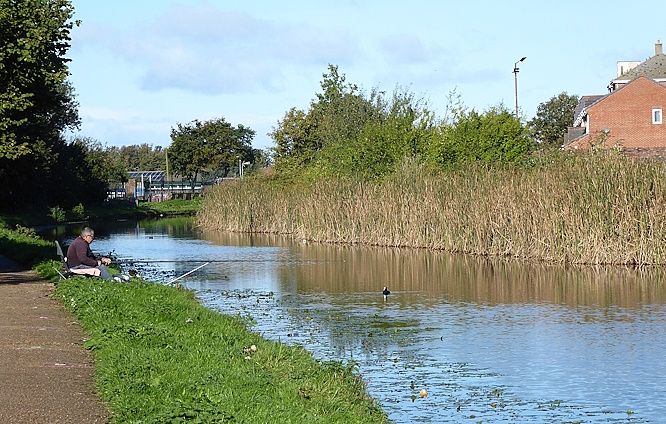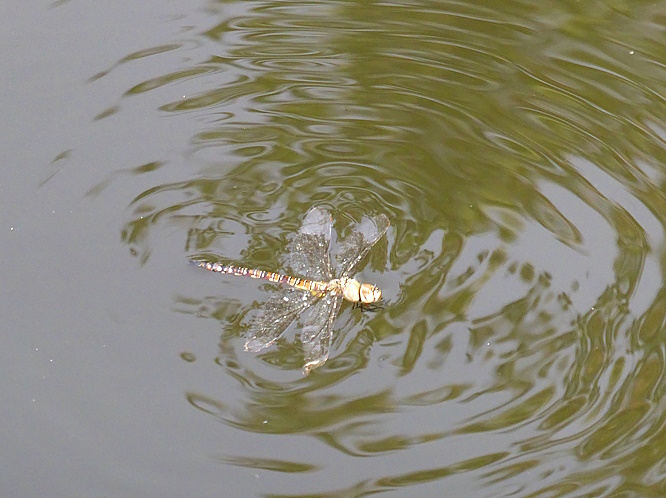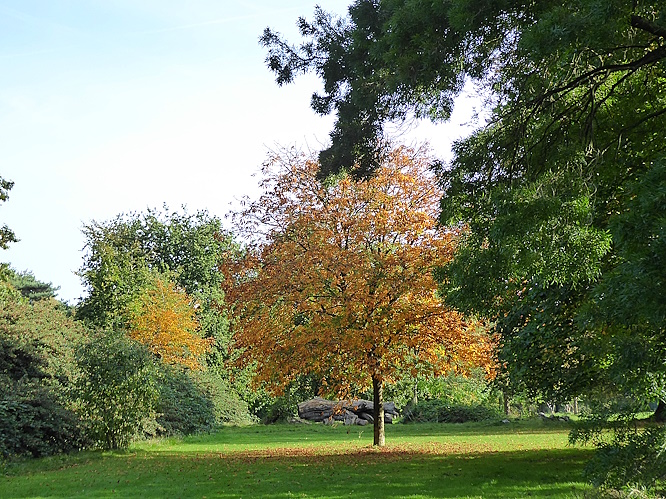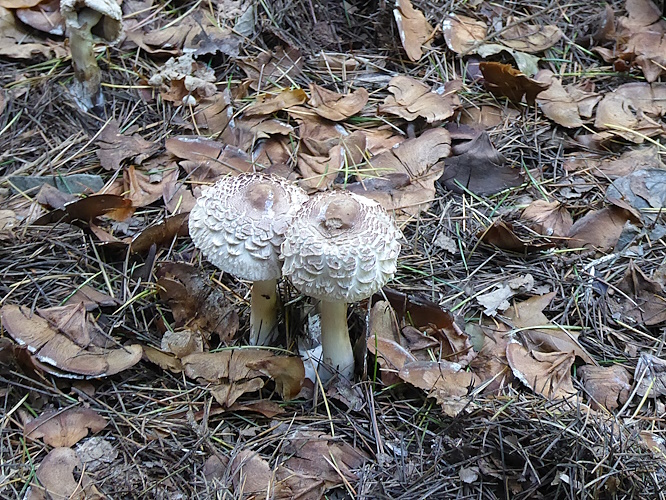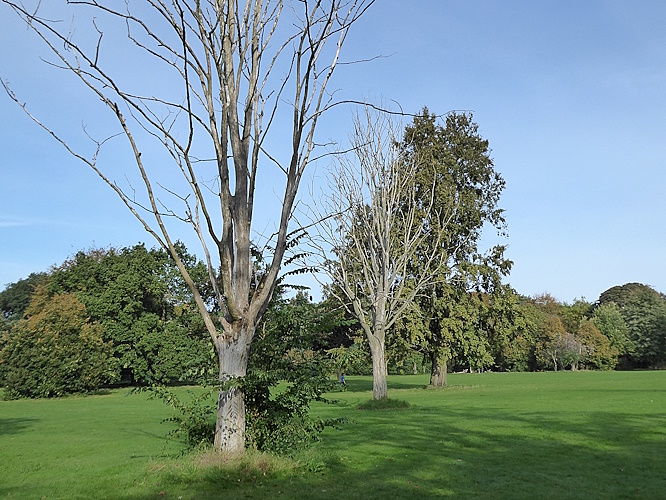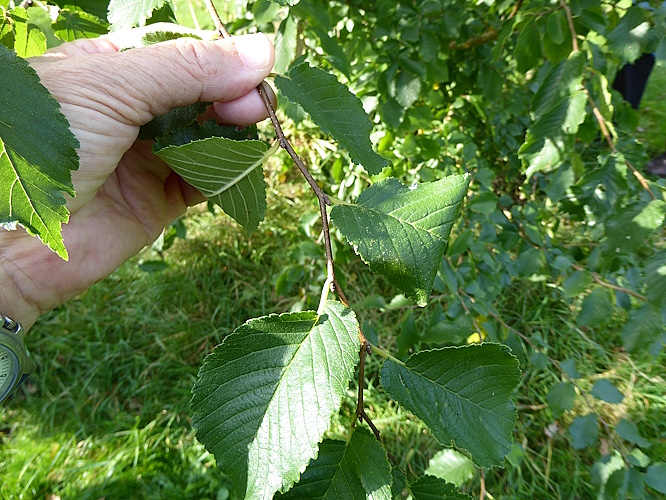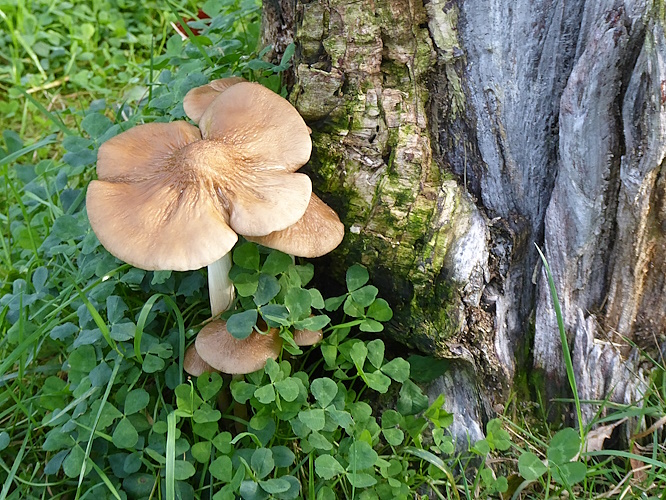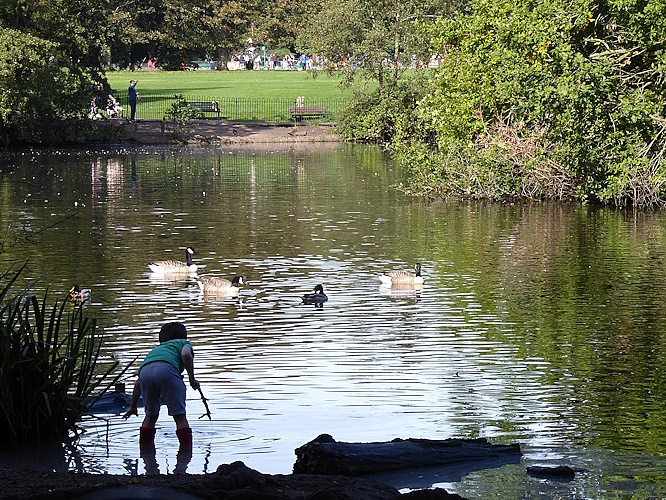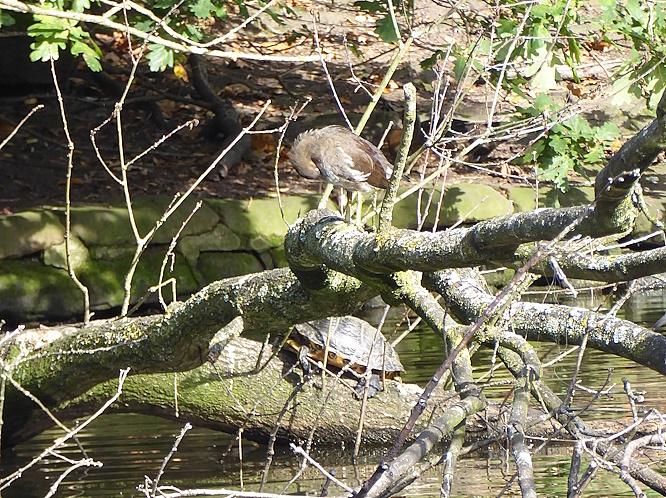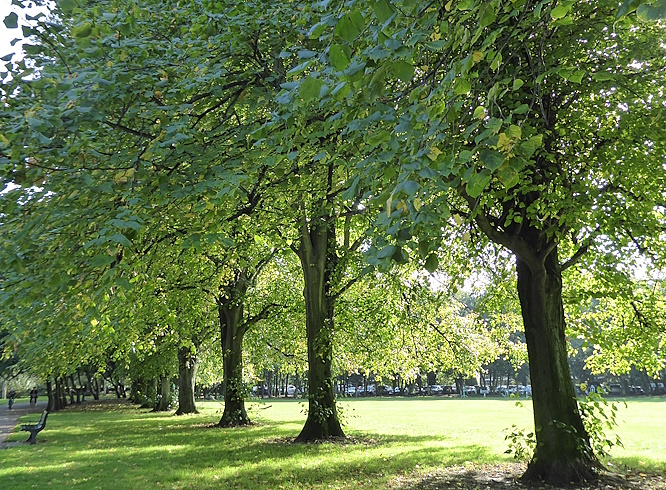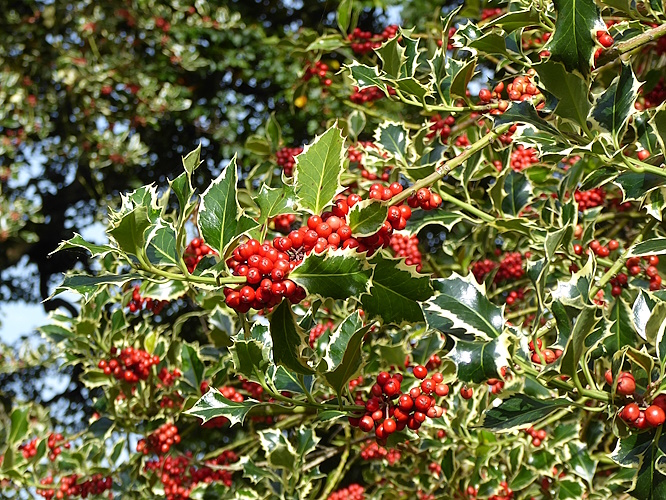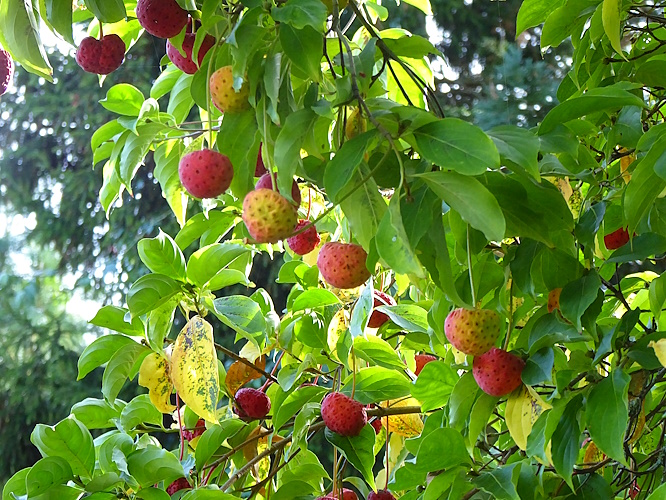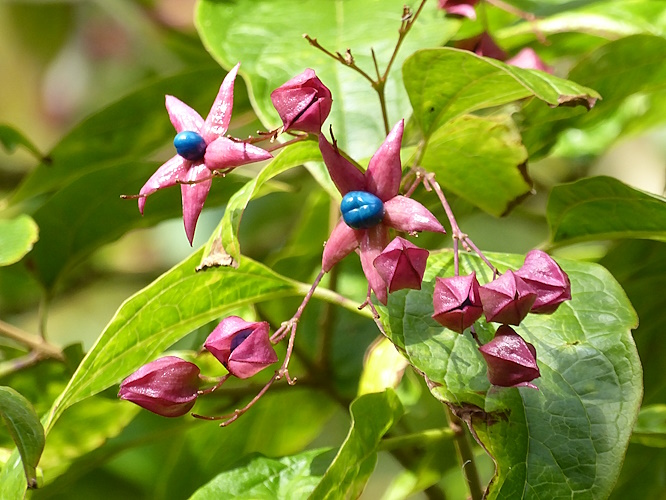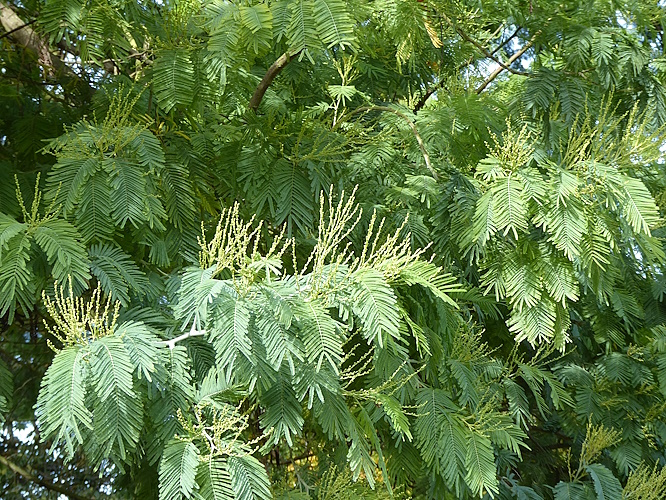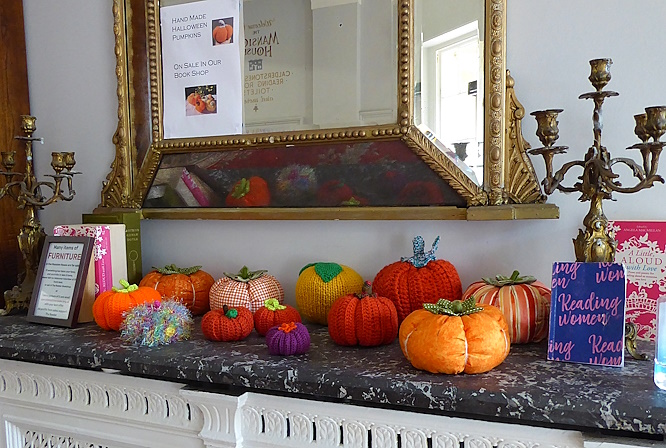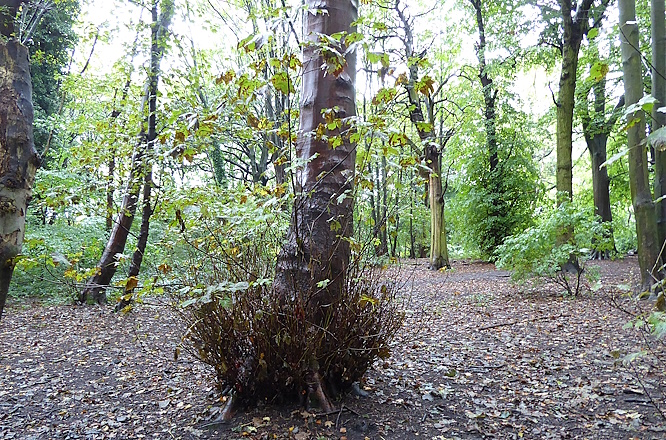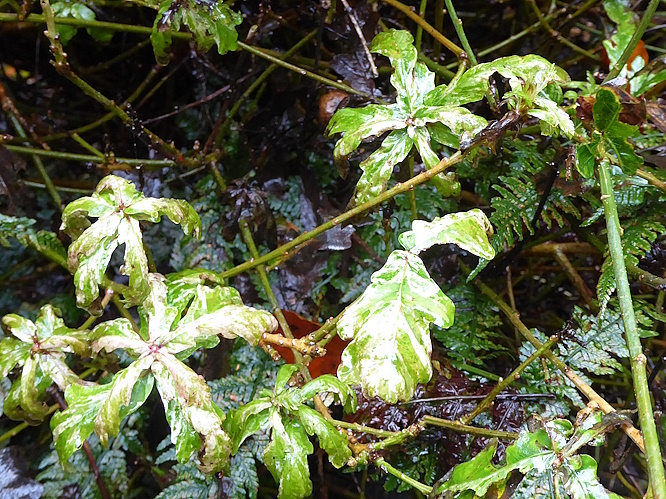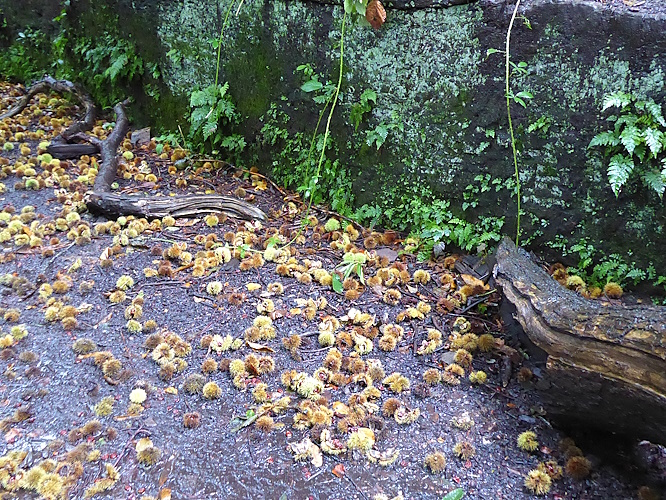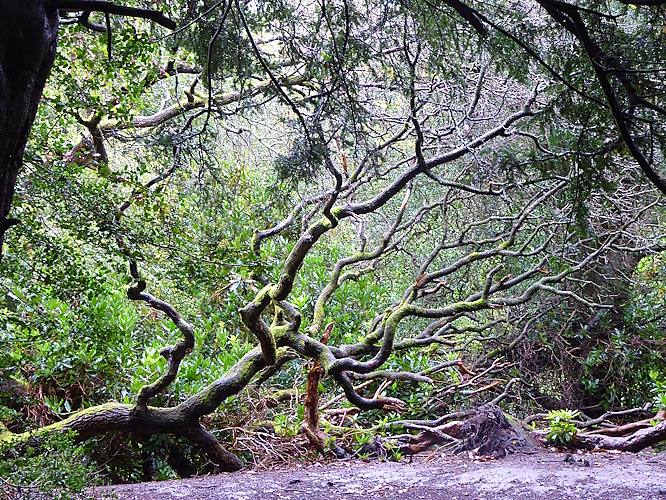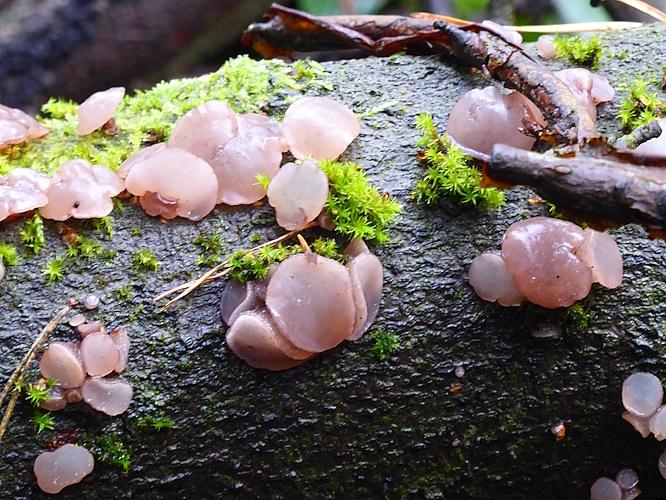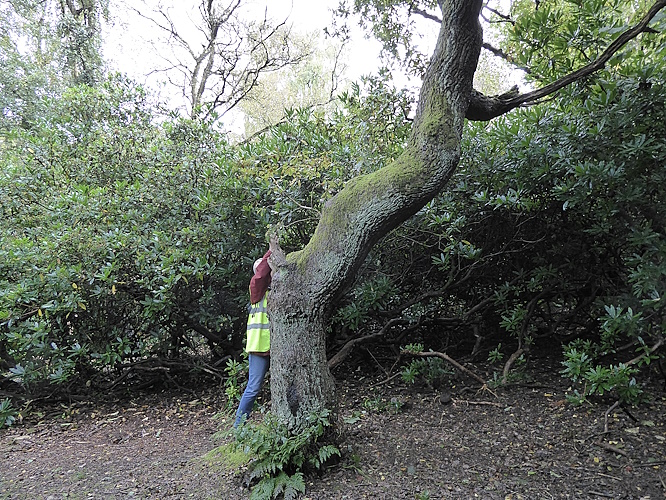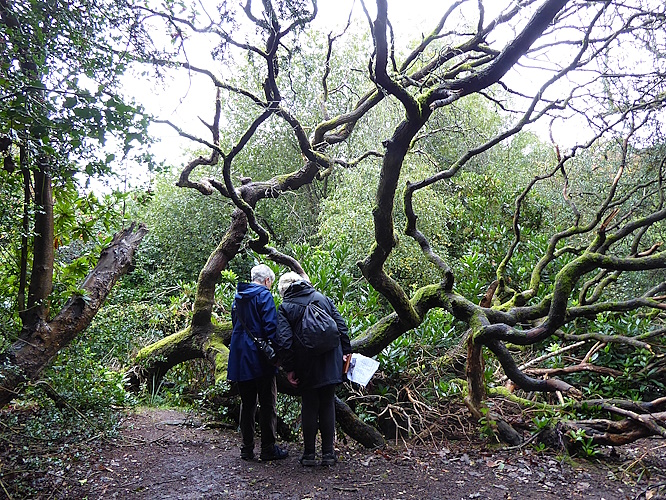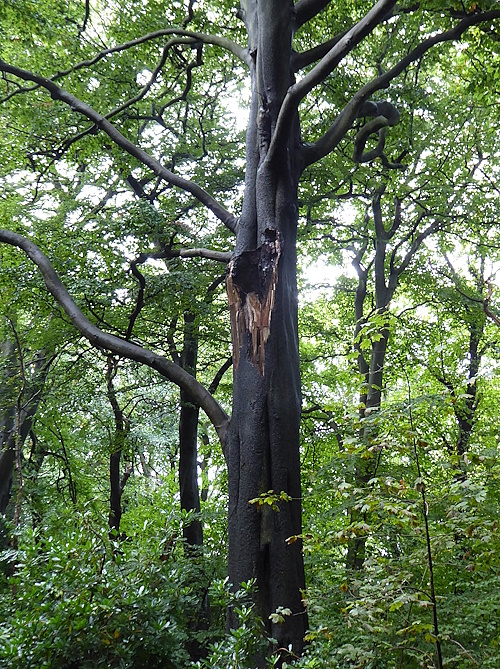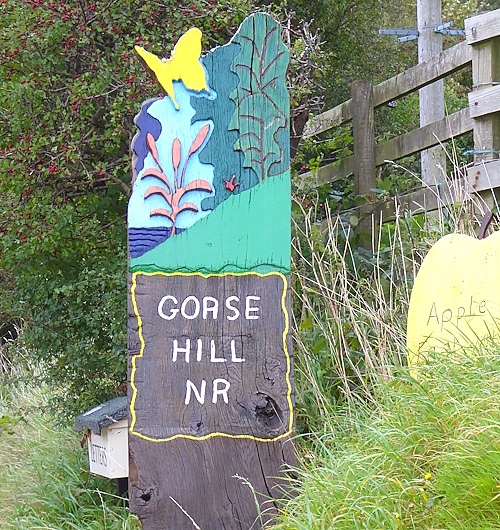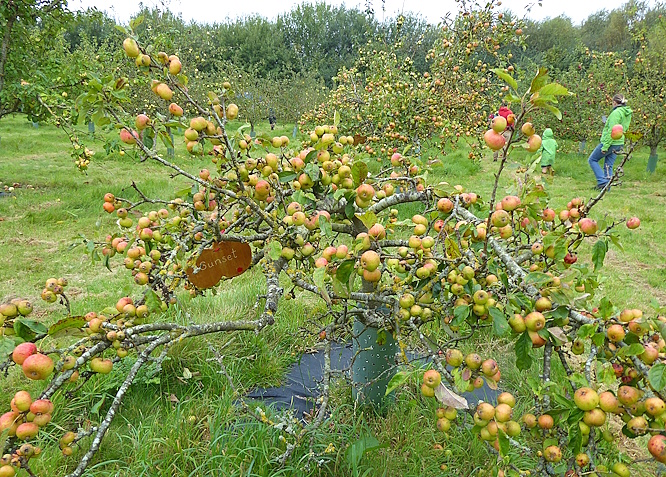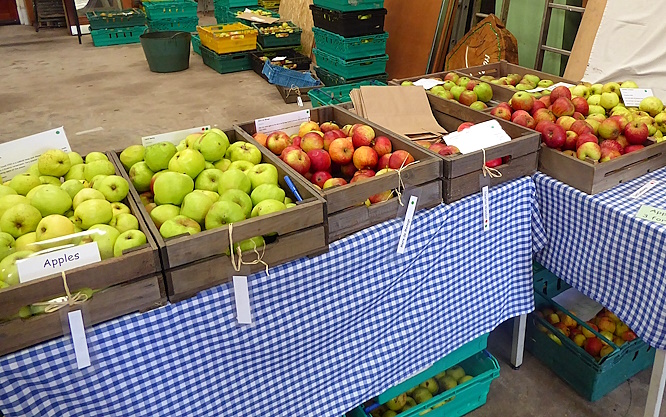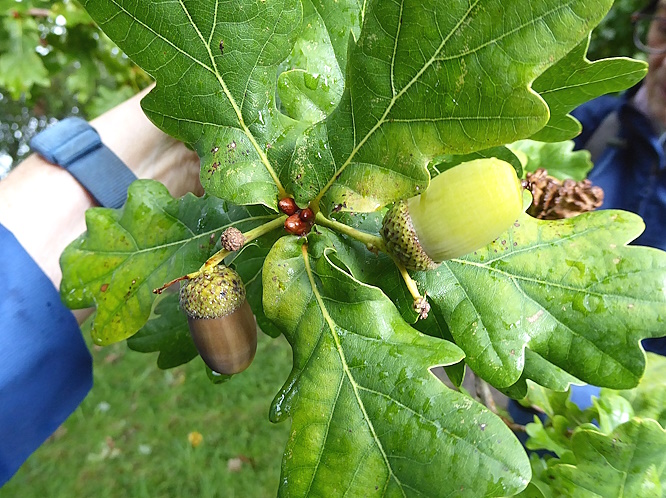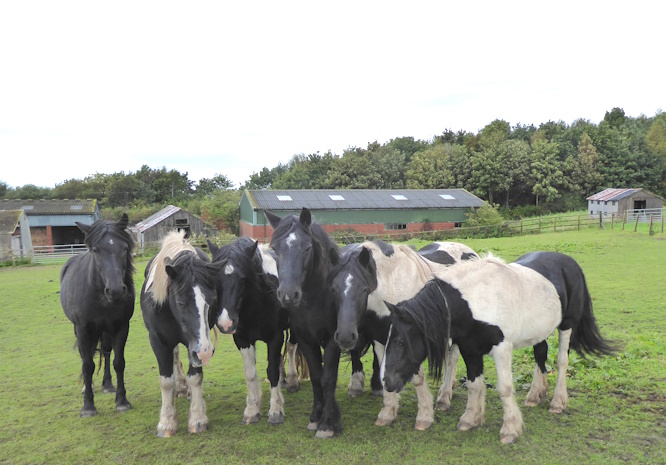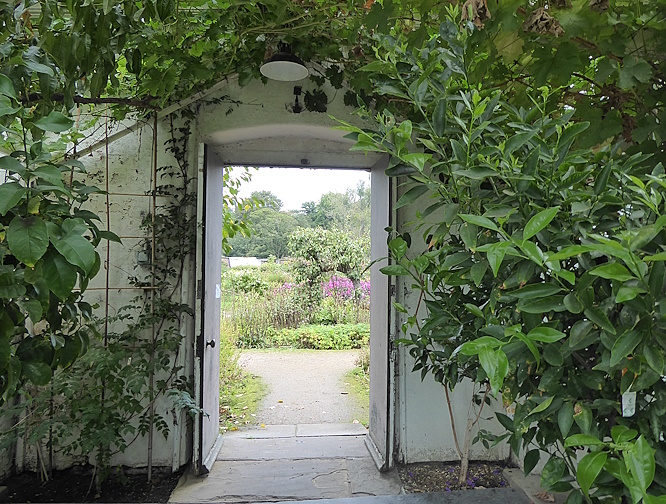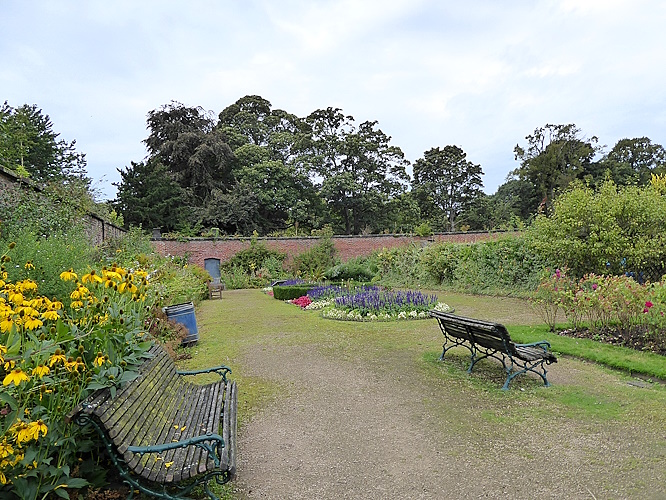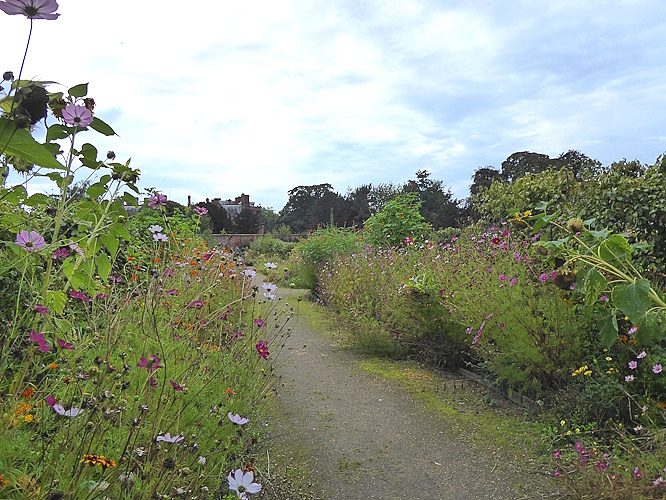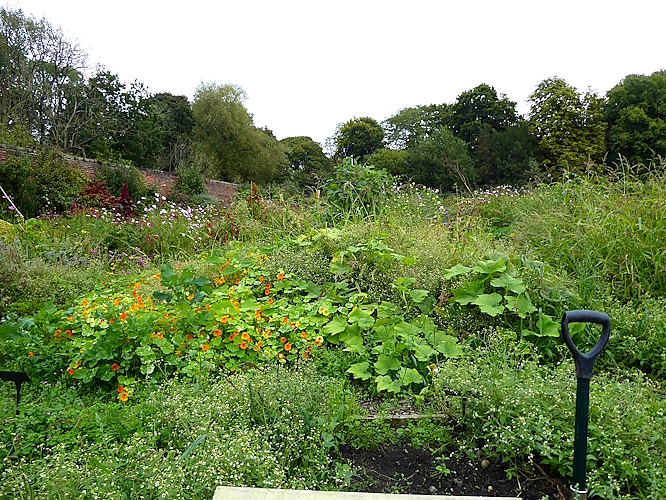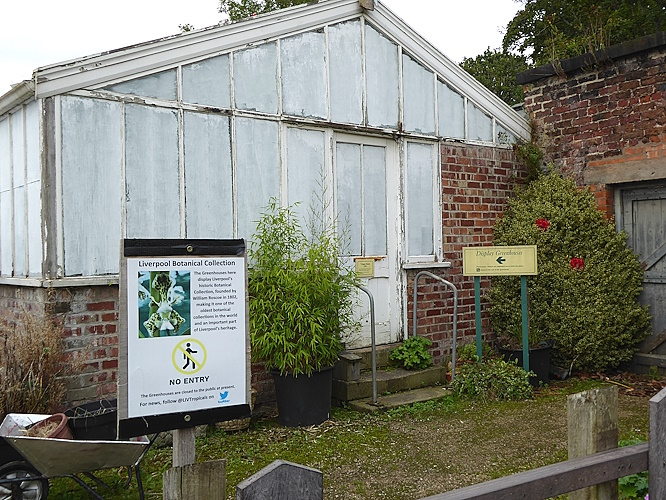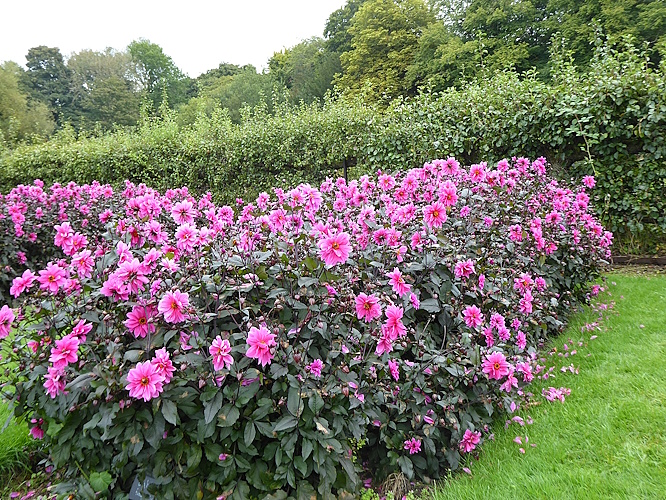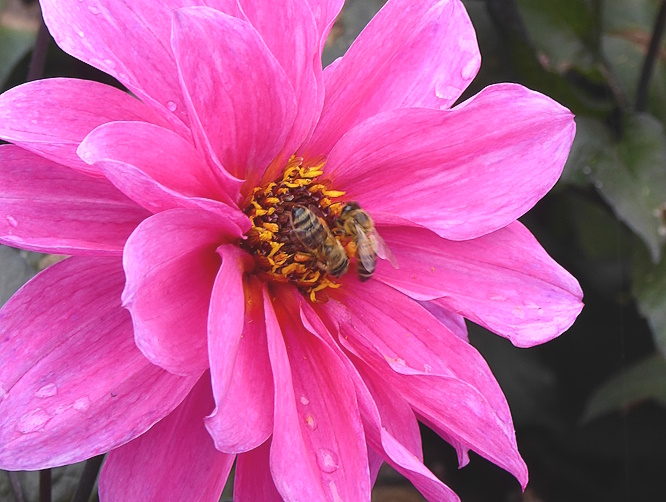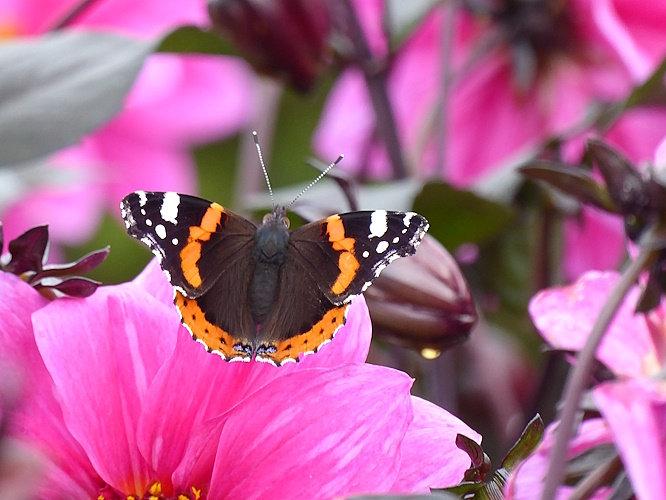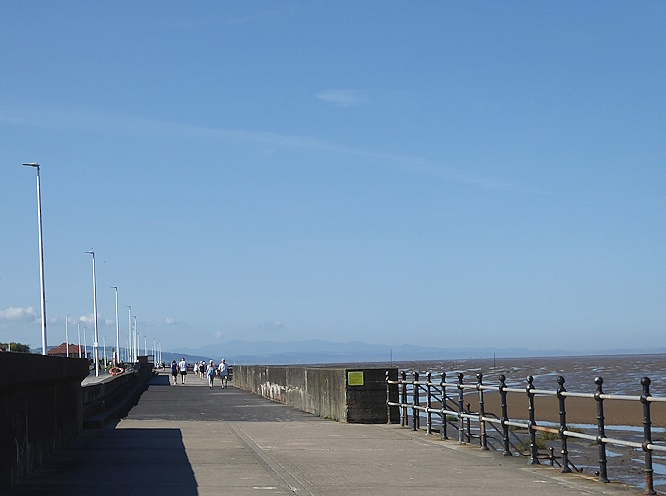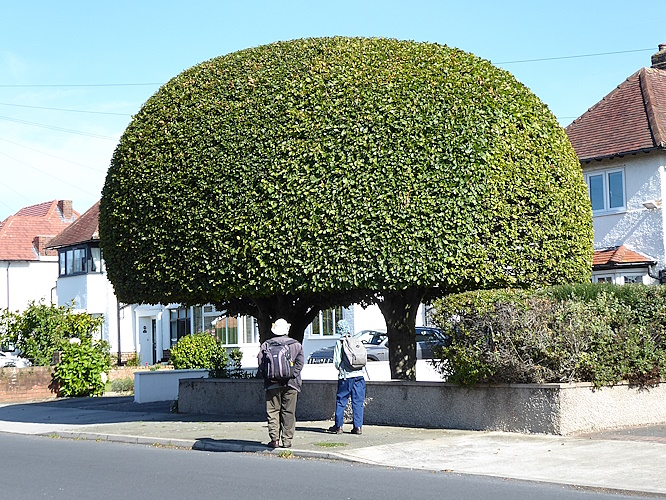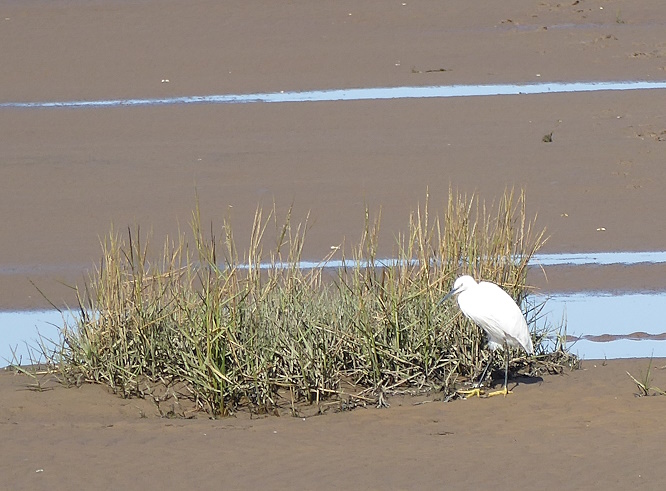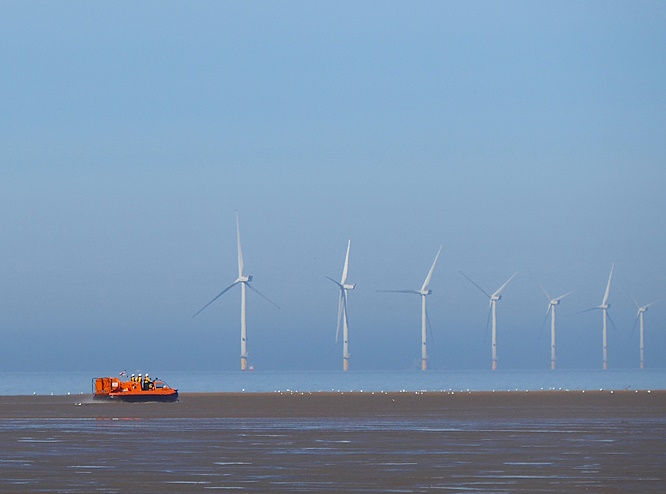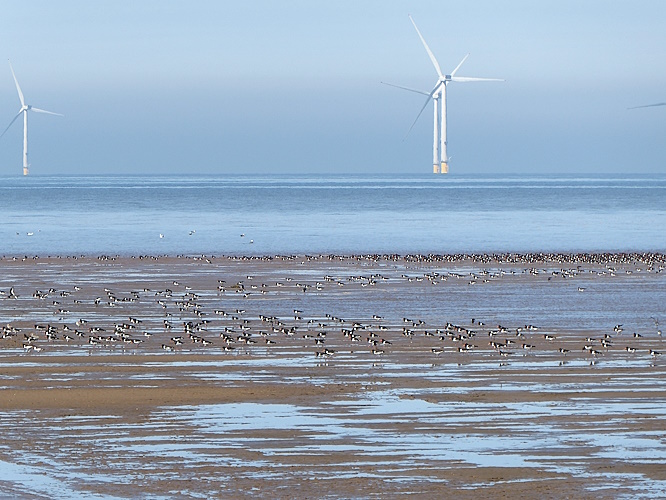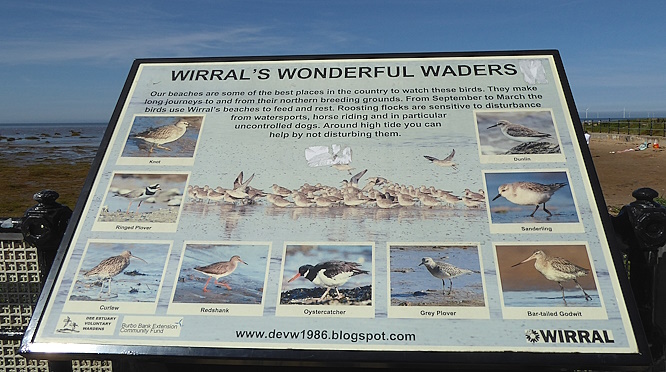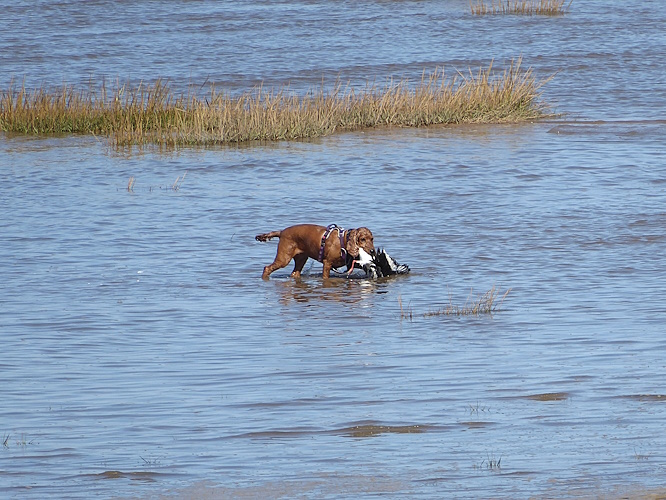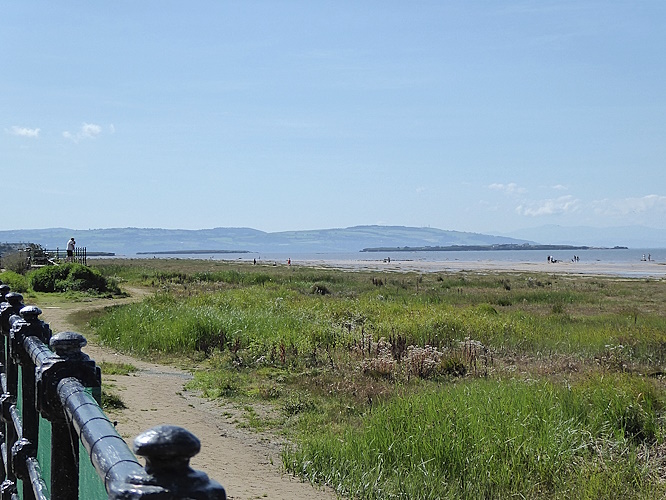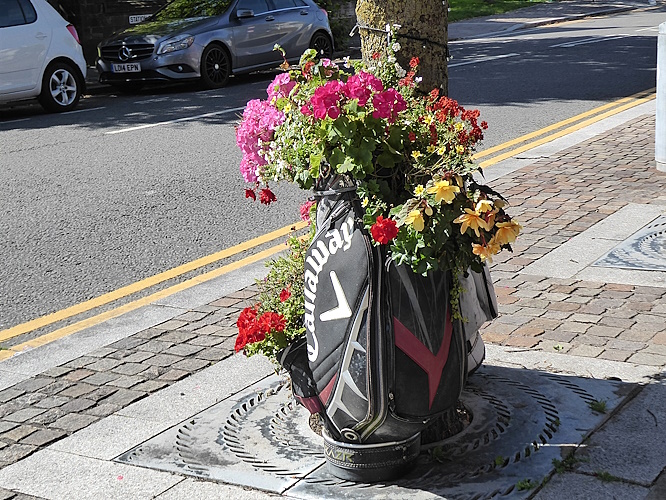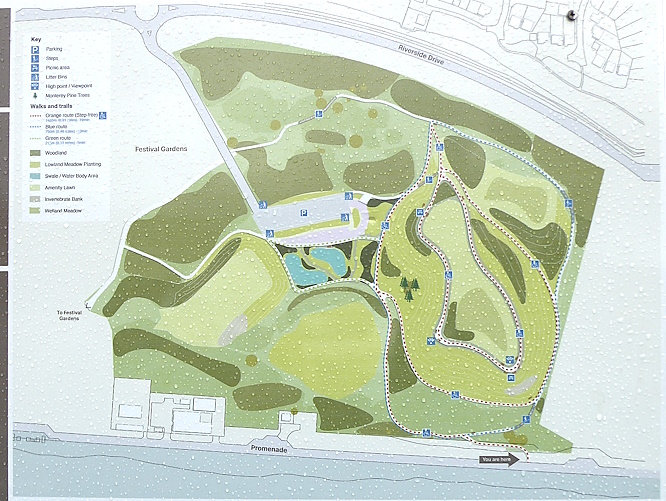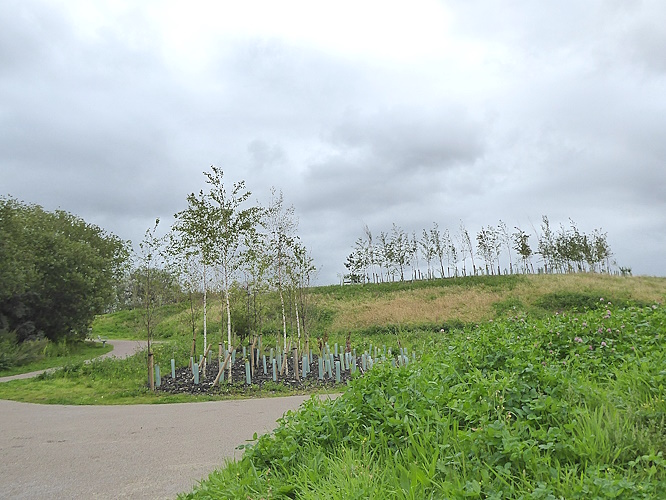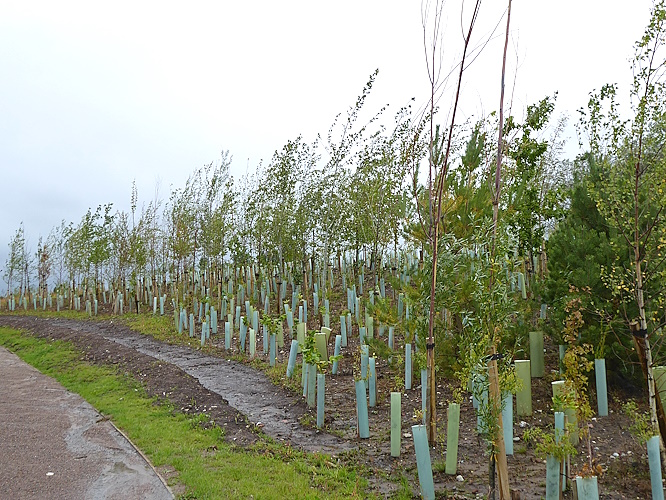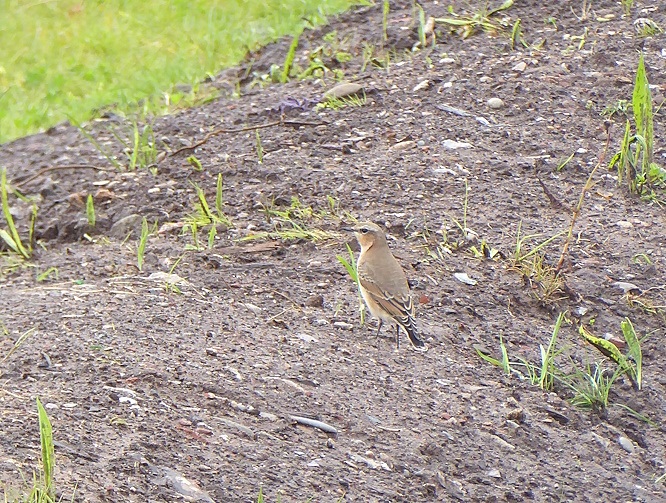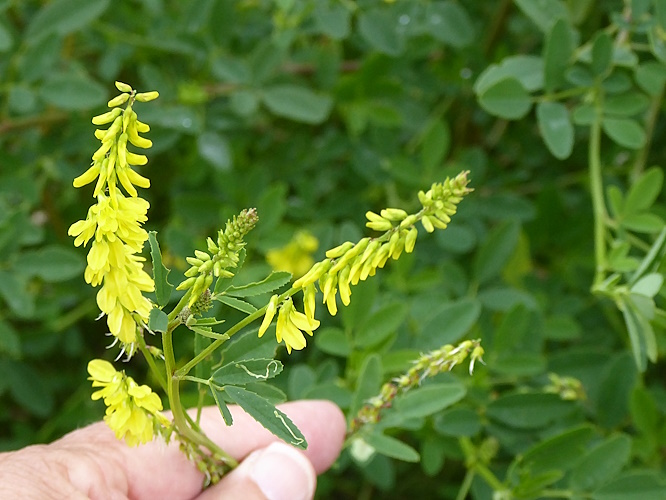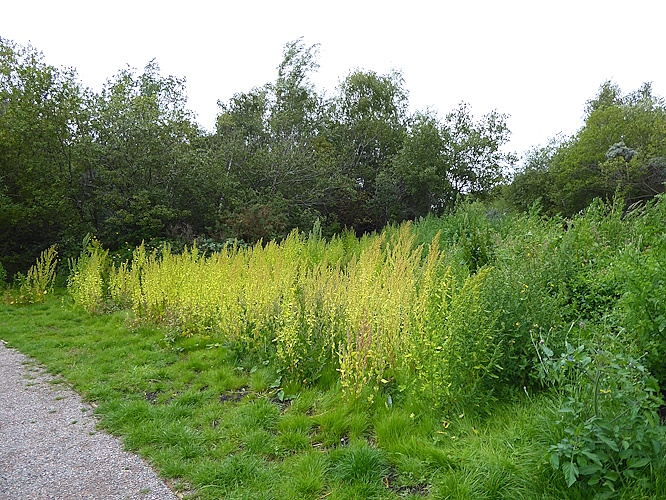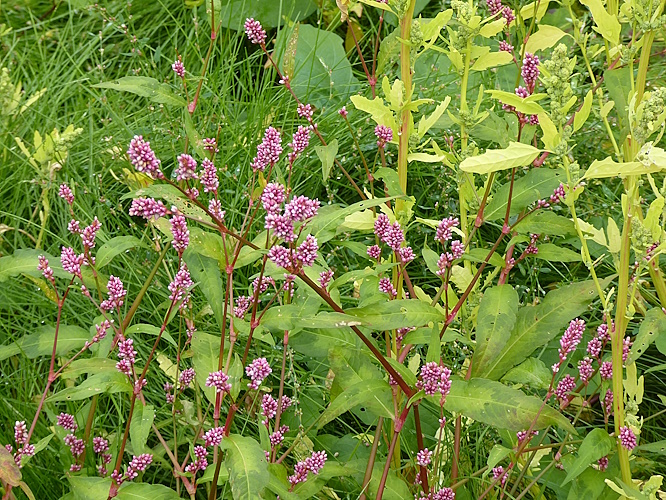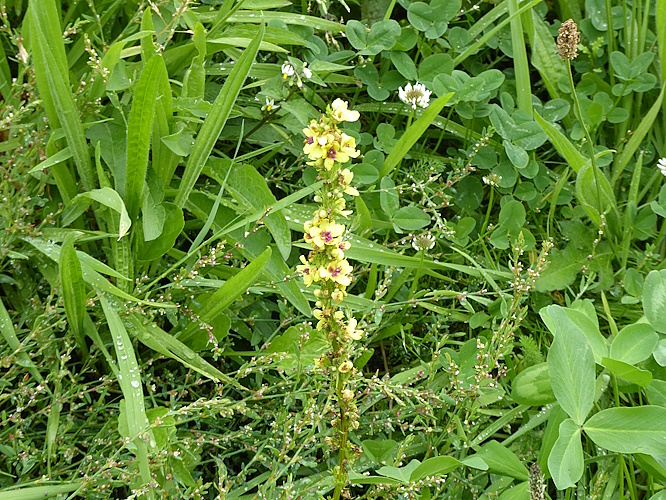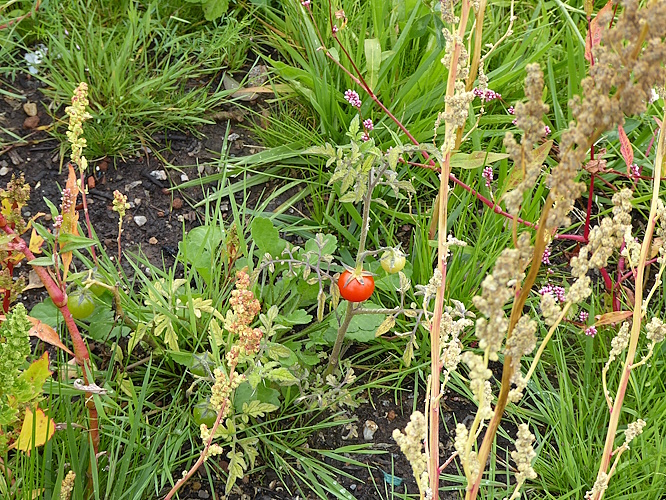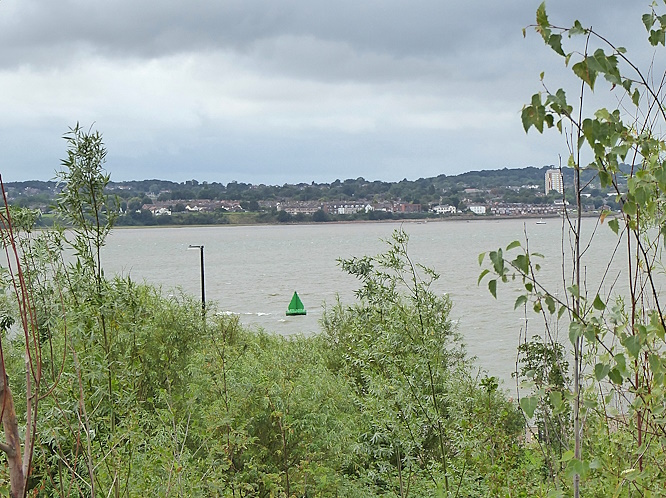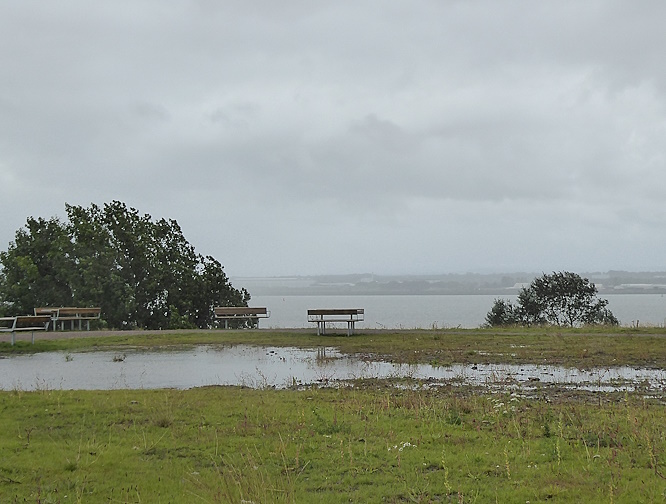Sudley House is a Victorian merchant’s house and grounds in south Liverpool, built in 1821 by people with connections to the slave trade, but bought in 1882 by ship-owner George Holt, who was also an art collector. When his surviving unmarried daughter Emma (a pioneer of women’s education) died in 1944 she left the house to Liverpool on condition that the grounds were to be used as a public park, and her father’s art collection was not dispersed.
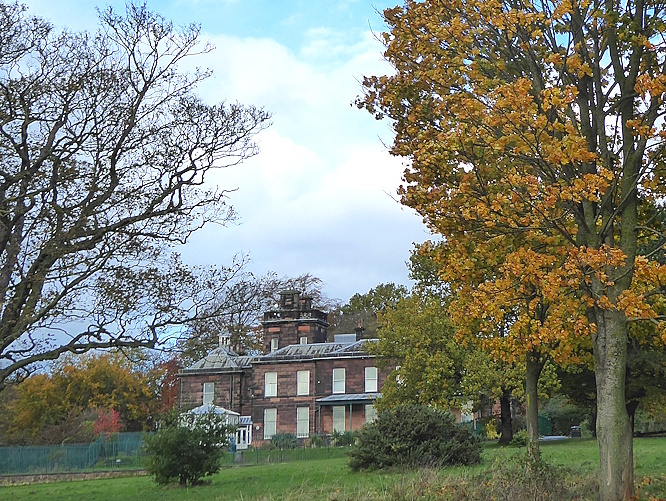
It was a showery day, more wet than dry, but we were able to look at some of the old trees in the gardens. The two huge old beeches have been lost to storms, but the imposing Tulip tree remains, with just one branch missing.
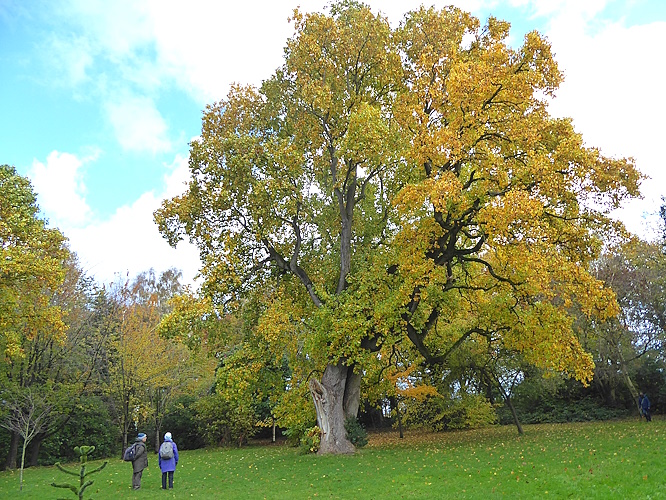
There are good younger trees, too. Near the Tulip tree is a baby Monkey Puzzle, and opposite the front of the house is a Sweet Gum, Liquidambar styraciflua, known for its spectacular autumn colour.
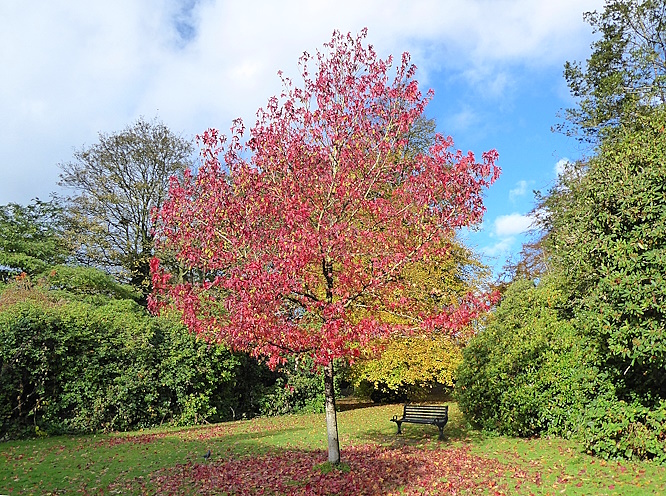
My nearly 50-year-old Mitchell’s Field Guide (of 1976) says the spiky fruits of Sweet Gum are “Not often seen”, but we are finding them more and more often nowadays, probably as a result of climate change.
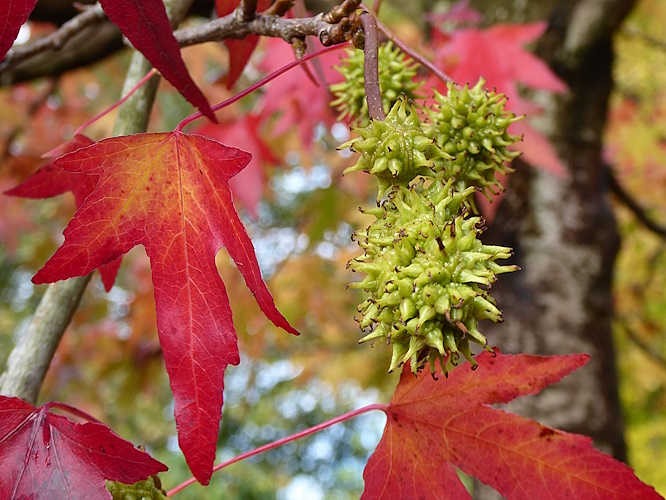
A heavy rain shower drove us indoors. George’s Holt’s pictures are now the only surviving, intact collection of artworks once owned by a merchant family. He had a couple of Turners and works by Gainsborough, Reynolds, Romney, Millais and more. Behind a curtain is this lovely “Angel playing a Flageolet” by Edward Burne-Jones, which you probably know well from Christmas cards.
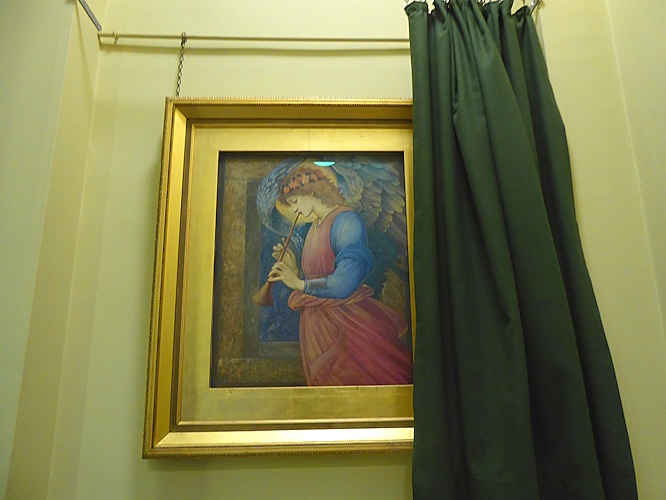
We lunched in shelter on the south-facing covered terrace. In front of it are some small plants I know as Cordyline Palms, but they aren’t palms, they are member of the Asparagus family and more properly known as the New Zealand Cabbage Tree Cordyline australis. They are endemic to New Zealand, and the first specimens known to Europe were collected by Sir Joseph Banks and Dr Daniel Solander, naturalists on the ship Endeavour, during Cook’s first voyage to the Pacific in 1769.
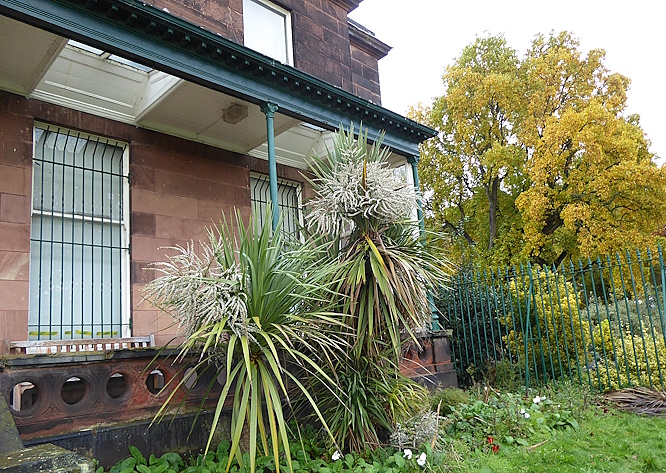
I am used to seeing plumes of mystery flowers high up overhead, but these plants were low enough to see they had ripened to white berries, each with two seeds.
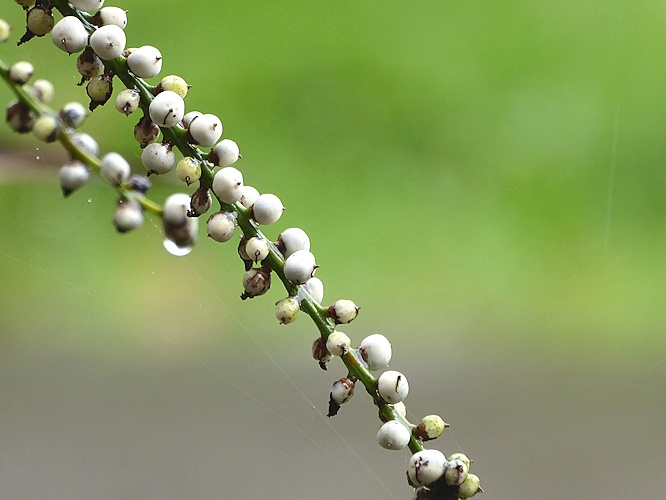
After lunch the rain cleared a bit and we ventured along the southern edge, passing a solitary Larch tree. They don’t do well this far south, and there aren’t many of them, but this one looked better than most.
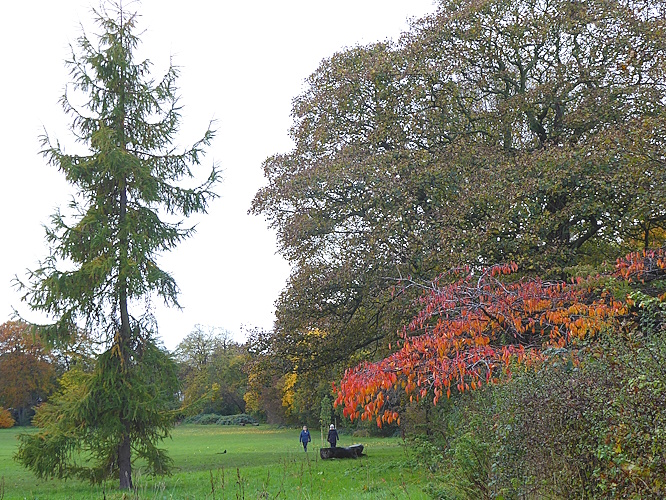
A volley of squawks alerted us to about five Ring-necked Parakeets which were coming to a bird feeder in the hedge. After they flew off we spotted a Nuthatch, and some Blue Tits and House Sparrows, coming to feed after the green thugs had gone.
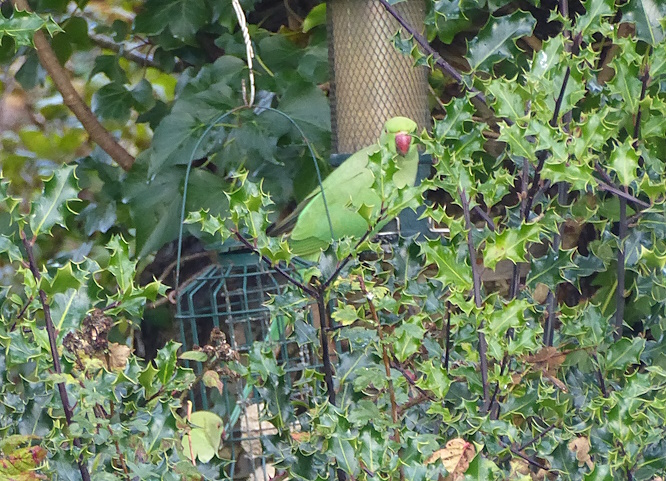
Public transport details: Bus 82 from Elliot Street at 9.55, arriving 10.15 at Aigburth Road / Chequers Gardens. Returned on 61 bus at Mossley Hill Road / Elmswood Road, changing to an 86A at Mather Avenue / Rose Lane and arriving city centre 2.15.


